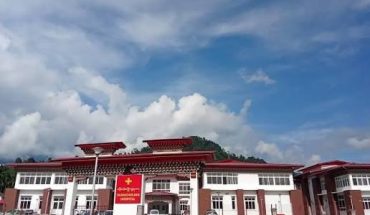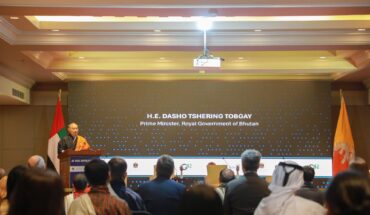The 7.1 magnitude earthquake that struck the Shigatse region of Tibet on January 7 has served as a stark reminder of the seismic risks facing the Himalayas, particularly in Bhutan’s vulnerable glacial zones.
While the tremors were felt across the region, with Gasa experiencing the highest intensity, the real cause for concern lies in the potential threat posed by Glacial Lake Outburst Floods (GLOFs), a risk exacerbated by seismic activity like this earthquake.
The earthquake triggered avalanches from the Table Mountain above the Bechung Glacier in Lunana. Fortunately, the gentle slope of the glacier absorbed the avalanche’s impact, preventing it from reaching the Bechung Glacial Lake.
However, such events illustrate the precarious balance between nature’s forces and the fragile glacial topography of the region. The fear remains that a larger avalanche or moraine slide could trigger a catastrophic GLOF, especially in lakes like Thorthormi or Rapstreng, which lie below the base of Table Mountain.
Experts from the National Centre for Hydrology and Meteorology (NCHM) have expressed concerns that similar seismic events could destabilize glaciers and cause avalanches, potentially leading to the sudden release of millions of cubic meters of water.
Such a wave could overwhelm moraine dams and result in downstream flooding. In the case of a collapse at Thorthormi or Rapstreng, floodwaters could devastate nearby communities, causing loss of life and massive destruction.
The fact that the region’s glacial lakes remain a source of concern cannot be overstated. A GLOF event remains a terrifying possibility in the face of seismic activity, and it is crucial that authorities continue to prioritize early warning systems and continuous monitoring of the lakes and surrounding glaciers.
Efforts to reinforce the structural integrity of natural moraine dams, such as those at Thorthormi and Rapstreng, are key to mitigating the risk of catastrophic flooding.
In this context, the government’s ongoing efforts to enhance earthquake monitoring systems come as a timely development. By March this year, the country will roll out a new web-based platform that will provide real-time earthquake intensity information to the public.
This upgrade, in collaboration with the GovTech Agency, will allow citizens to report their experiences and receive critical updates about seismic activity. These initiatives, including the automated dissemination of earthquake information to stakeholders, will significantly improve the country’s preparedness and response capabilities.
For communities in at-risk areas, the continued vigilance of NCHM’s monitoring teams is essential. While some residents have already been advised to relocate, financial aid for resettlement is still pending. As these communities await support, the government must ensure that they are not left vulnerable in the face of future seismic events.
This earthquake serves as a wake-up call for all stakeholders in the region. As Bhutan confronts the realities of climate change and seismic hazards, it is imperative to build resilience against GLOF risks.
A robust early warning system, improved infrastructure, and continued investment in scientific monitoring will be crucial to safeguarding lives and property from the potential threat of a catastrophic flood.




